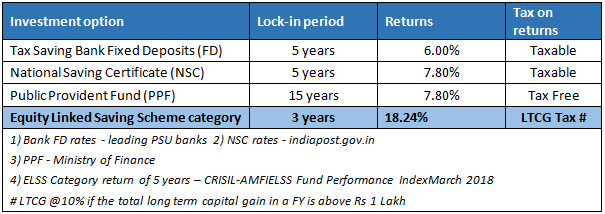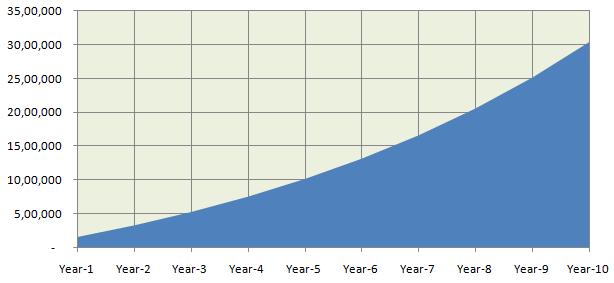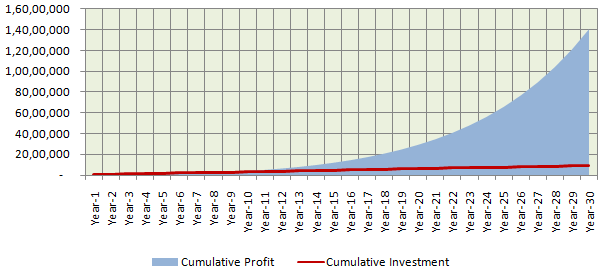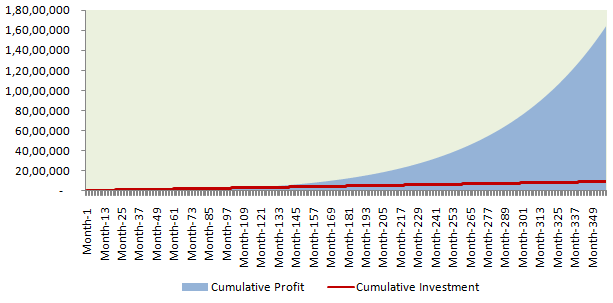The Indian stock market made its all-time high a few days back, with the Nifty scaling the 10,000 points mark. The market has been rallying from the beginning of this year and breaching the 10,000 level on the Nifty was seen as an important technical breakthrough for the market. Investors have reasons to cheer the stock market because the Nifty has risen 40% in the last 16 – 17 months and many investors would have made handsome profits. However, such a terrific rally also raises concerns whether the market is overheated and if a correction is round the corner.
Is the market overheated?
Though valuations (P/E ratios) are not as high as the heydays of 2007, current valuations are certainly higher than the historical average. The Nifty is trading at 19.36 times of expected FY 2018 earnings, while the 10 year historical average is 16.76. We are in the middle of Q1 results season and therefore it is too early to say, whether corporate India will be able to live up to the market’s earnings expectation; nonetheless, it is understandable that, some investors are concerned about stretched valuations. Should retail mutual fund investors worry about investing in this high market?
Market rise or fall is not always good or bad
We often view market movement (rally or crash) from a one-dimensional perspective. For example, a stock market crash or correction has varying effect on different investors depending on their investment strategy. While some investors may lose a lot of money in crashes or corrections, for some investors a correction might be very beneficial from a longer term perspective. Investors sitting on cash, for example, find corrections beneficial because they can buy stocks at cheap prices.
Similarly, stock market rally is not always a very happy situation for everyone. Investors who are invested in stocks or mutual funds are happy with a big rally, but investors sitting on cash waiting for market dips to invest are not happy with a big rally. I know friends, who are sitting on cash for the last 6 – 7 months, waiting for an opportunity to invest their annual bonuses; they are not happy because the market is 20% higher than what it was at the beginning of the year and they thought that, “they did not get an opportunity to invest in the market”.
Futility of trying to time the market
The joy and sorrow, of investing in stock market often boils down to the investor’s success in trying to time the market. If people are able to time the market successfully (buy when prices are low and sell when prices are high) they are overjoyed. Failure to time the market, like my friends mentioned earlier, brings sorrow. Based on my experience, retail investors who get their timing right are simply lucky. Why? Even experts cannot get the market timing right. At the peak of every bull market I saw (2007, 2010, 2015 etc.), experts were very optimistic, talking about momentum and secular growth.
At the bottom of every bear market (2008, 2011, 2016 etc.), experts were very pessimistic about the prospects of either the domestic economy or the global economy or both. There were also a few false alarms like, when NDA – 1 (Vajpayee) lost elections in 2004 or when US Federal Reserve scaled back the Quantitative Easing Program (started in 2008) in 2013. If experts cannot get market timing right, then it is not possible for retail investors to get their market timing right, unless they are simply lucky.
Further, even if you get your timing right, the impact of market timing is usually only marginal over a long investment (5 – 7 years or longer) horizon for most investors. On the other hand, if you get timing wrong, you will regret your decision. The desire to time the market arises out of two primal instincts – greed and fear. These two instincts go hand in hand and prevent investors from taking decisions which are in their best financial interests.
We, in Advisorkhoj, are big advocates of systematic investing because it frees you from the clutches of greed and fear; over a sufficiently long investment horizon, irrespective of market conditions in the interim, systematic investing in good mutual fund schemes yield good results. Readers should note that, just because we advocate systematic investment, we are not against lump sum investing. From time to time, depending on your financial circumstances, your financial goals and market conditions, you should make lump sum investments, but it is the topic of another blog post.
What should mutual fund investors do?
Let us now discuss, what mutual fund investors should do, when the market is at its all-time high? Lump sum investments at such high levels can be a little risky, unless you have a long investment horizon. Systematic Investment Plans (SIP) work well in all market conditions including high markets, as will explain now. Readers should note that, since SIP investments are made with relatively small amounts from your regular savings, you should always have a long investment horizon, so that you create wealth from your regular savings.
SIP Investors
Let us assume you are investing in equity mutual funds through SIP. When the market is at its all- time high, there can be two scenarios – either the market goes up further or there is a correction (there can be a third scenario, which we will discuss later in this post, but let us restrict ourselves for the time being to these two scenarios). SIP works to the advantage of investors in both the scenarios.
Rising Market
Let us start with the first scenario – the market going up further. Should you stop your SIP investment or continue with it? If you continue with your SIP investment, you will be buying units of mutual funds at higher and higher prices. To some investors, buying mutual fund units at higher prices may not sound very logical; but long term SIP investors should ask themselves, whether they have not been buying units at higher and higher prices (except during bear markets) and yet they have made profits, because the current price of the unit is higher than the purchase price. If you are worried about buying units at a higher price, ask yourself what you should do instead? Stop your SIP, accumulate cash and invest in lump sum when the market falls? If you are thinking about it, ask yourself if you know, when the market will fall and by how much? Are you sure that, the market will fall below the current levels? You can never be sure. When investing in SIP in rising markets, each SIP instalment will be invested at a price which is lower than the peak of the rising market (bull market). So you always stand to benefit.
Falling Market
Let us now discuss the second scenario – a market correction. Should you stop your SIP investment or continue with it? If you continue with your SIP investment, you will be buying units of mutual funds at higher prices with each instalment and then when the market falls your investment will reduce in value. This is the worrying scenario for many investors; so what should you do? Should you stop your SIP and wait for the correction. Do you know when the correction will come?
There are a variety of market movements which are counter-trend and also temporary, e.g. a bull market correction or a bear market rally. These movements are difficult to spot and even more difficult to execute upon. You may end up waiting too long for the correction and you may suffer an opportunity loss during the waiting period. As an existing SIP investor, a correction is beneficial for you; you will buy units of mutual funds at lower and lower prices in a bear market or correction. As discussed earlier, it is almost impossible to get the timing of the correction right. Market movement may be quite significant between your timing and the actual market movement in the direction you want to; therefore, it is always wise to continue your SIP so that, you can benefit from Rupee Cost Averaging.
Range-bound Market
Thus far, we have discussed why continuing your SIP is beneficial both when, prices are expected to rise and prices are expected to fall but the timing is uncertain. Let us now discuss the third scenario, where market can remain range-bound for a period of time. Based on my experience of investing in and following stock market in India for more than 15 years, prices remain range-bound only for a limited period of time; eventually prices follow a direction (usually upwards, rarely downwards). But even in the scenario of range-bound market, SIP works wonderfully well, because equity markets are intrinsically volatile. By investing on a systematic / regular basis every month, you can take advantage of the volatility through Rupee Cost Averaging of purchase price of mutual fund units. Through Rupee Cost Averaging you can enhance your rate of returns over a long investment horizon.
Conclusion
We have discussed that, SIPs are win-win-win in all the three scenarios – rising market, falling market and range-bound market. Some of our readers may be sceptical, how SIP can work in all the three conflicting scenarios. The answer is quite simple, as some of readers may have already figured out. In SIP we are not looking to invest at the best price; we are only looking to invest at an average price, knowing that equity prices will appreciate over a sufficiently long investment horizon. If you are looking to invest at the best price then you are trying to time the market which, as we discussed earlier, is close to impossible and is likely to cause you stress, not to mention financial loss (opportunity loss or actual).
SIPs work on the fundamental premise that, equity as an asset class creates wealth for investors (by beating inflation on a post-tax basis) over a sufficiently long investment horizon. If you believe that, equity as an asset class creates wealth, which is supported by enough historical evidence around the world, you will not worry about investing in high market or low market. SIP is a wealth creation tool; market timing is irrelevant in SIP as we saw in this post. If you are a long term investor, continue with your SIP irrespective of market condition. Just make sure that, you have invested in good mutual fund schemes and be patient, unruffled by volatility or market movement (up or down).













